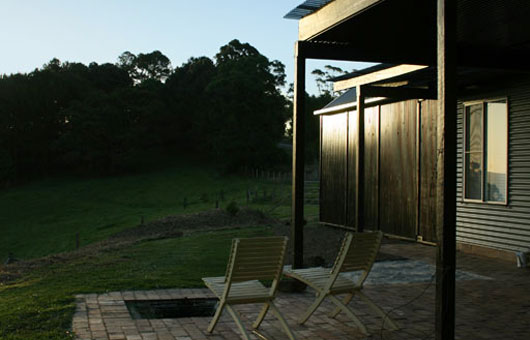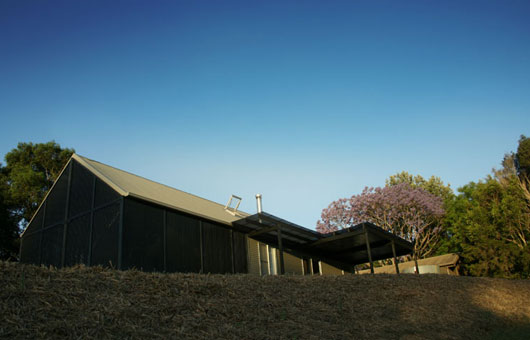In August 2007, Ark Atelier founder and architect Stephen Cameron acquired an old dairy grazing farm in Queensland’s Maleny, in the Sunshine Coast hinterland for renovation and a new way of life.
“Before that we’d been coming up this way for years on weekend holidays – the landscape is a spectacular combination of volcanic topography and subtropical forests, overlaid with the lush green expanses of post-colonial agriculture – and we wanted to make the experience of this high country a much more regular part of our lives.
“So, after years of searching we finally found ourselves the owners of this quite sublime property,” Cameron says.
He says originally there was no building other than a rotting shack but the beauty of the landscape had its own charms.
“What we really first loved about the property was simply its immense beauty. There is a previously cleared path that winds its way through the various micro-environments of the property, making it perfect for strolling around,” Cameron says.
Originally the Camerons had envisaged a project over a lengthy timescale but have since deviated from that out of a necessity to utilise the property immediately.
“It has proceeded very quickly and very directly more or less exactly to plan, that plan being to utilise a pre-existing and readily available construction technology (the ‘shed’) to make something that would allow us to pursue this living experiment straight away and at minimal cost,” Cameron says.
“By utilising the full volume rather than just the floor area of the steep-roofed vernacular shed form we’ve been able to make a living environment that, whilst being extremely compact, offers a sense of generosity coupled with layers of privacy – qualities that are ordinarily mutually exclusive in houses on this scale and budget.”
Various ‘greenovations’ have been incorporated into the design in support of Cameron’s ideas on sustainable architecture to keep everything “simple” and “robust” and include a simple, extruded gable form with long sides facing north and south to capture sun and scenery.
Other green inclusions such as walkways with translucent roofing also run the length of the house providing plenty of shade and protection from the heavy rain that falls in Maleny for a large portion of the year.
“Roof overhangs have become very unfashionable of late, but they are infinitely (more) superior than the alternative of complex multiple-glazed windows with zero overhang, and not just from a sustainability point of view,” Cameron says.
“Zero overhang equates to zero transition between inside and outside, leaving nothing but an abstract sense of abrupt separation between where one is standing (whichever side of the glass that may be) and the contents of the view through the glass, which is always reduced to the status of a flat image rather than a fully corporeal, conjoined reality.”
Ark Atelier
ark.net.au




